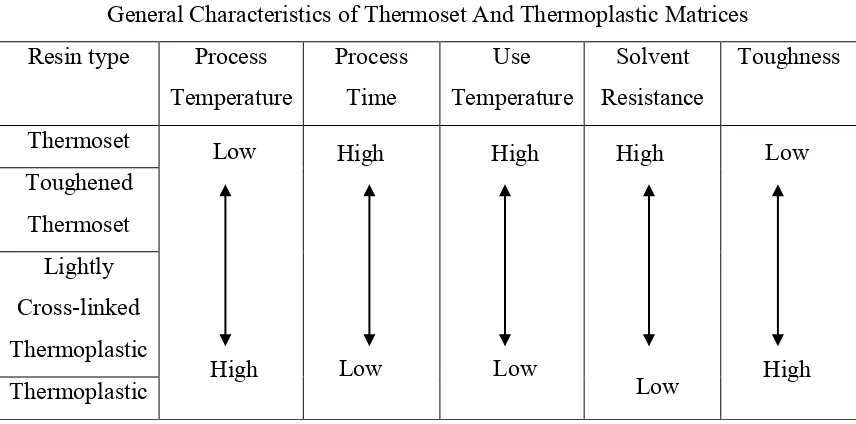DAMAGE INITIATION AND PROPAGATION OF SANDWICH COMPOSITES PANEL UNDER COMPRESSIVE LOADING
ISKANDAR BIN MERAN
Laporan ini dikemukakan sebagai
memenuhi sebahagian daripada syarat penganugerahan Ijazah Sarjana Muda Kejuruteraan Mekanikal (Rekabentuk & Inovasi)
Fakulti Kejuruteraan Mekanikal Universiti Teknikal Malaysia Melaka
1
CHAPTER I
INTRODUCTION
1.1 Background of project
There have been far fewer studies for composites sandwich panel for the compressive failure than there have been of tensile failure. This is because it is extremely difficult to produce perfect reproducible specimens and compressive strength is very sensitive to variation in composites make up. In this research it will focus on finding the damage initiation and propagation of sandwich composites panel under compression load.
2
The stabilized compressive strength (also called flatwise compressive strength) represents the ultimate compressive strength of the honeycomb in Newton per square meter when loaded in the T direction. Normally for this test, facings are adhesively bonded to the honeycomb material (stabilized compressive). The stabilized compressive modulus, also expressed in Newton per square meter, is determined from the slope of the initial straight-line portion of the stress-strain curve. Some honeycomb materials exhibit a linear initial stress-strain relationship, while other honeycomb materials exhibit a nonlinear curved initial stress-strain relationship.
In the study of failure initiation and propagation of composites sandwich panel, many things have to be consider such as manufacturing process, type of load, material it self, environment and etc. main purpose to study about the failure initiation and propagation is to determine the type of failure with variation of load, and to predict the composites material failure stage. It is useful to predict the failure initiation in everyday life and it all about safety.
1.2 Problem statement
3
1.3 Objective
The aim of this research is to investigate on the damage initiation and propagation of sandwich panel under compressive loading via four-point bending test.
1.4 Scope
This research comprises of the following activities:-
i) Literature study on composites material.
4
CHAPTER II
LITERATURE REVIEW
2.1 Composites
In the continuing quest for improved performance, which may be specified by various criteria including less weight, high strength and lower cost, currently used material scientists, engineers and scientists are always striving to produce either improved traditional material or completely new material. Composites are an example of the latter category.
5
both constituents have to be present in reasonable proportion, say greater than 5%. Secondly, it is only when the constituent phases have different properties, and hence the composite properties are noticeably different from the properties of the constituents, that we have come to recognize these material as composites. Lastly, a man made composite is usually produced by intimately mixing and combining the constituents by various means.
Figure 2.1: Formation in composite material. [Source: Helsel & Liu (2001)]
[image:18.612.240.405.251.399.2]6
2.2 Matrix
Matrix is one part of composite that used to surround the reinforcement material. The matrix can be polymer, metal and ceramic. It acts as a medium to support and protect the reinforcement. The matrix protects the individual fibers from the surface damage because of mechanical abrasion or chemical reaction with the environment. It avoids brittle cracks from fiber to fiber and serves as a barrier to crack propagation (Callister, 2003). Usually matrix have a lower density, stiffness, and strength compared to reinforcement material but when the matrix combine with reinforcement material it produces high strength, and stiffness and still low in density.
2.2.1 Metal Matrix Composites
Metal matrix composite (MMC) commonly used a ductile and light metal as a matrix such materials include aluminium, magnesium and titanium. For high temperature applications, cobalt and cobalt-nickel alloy widely used.
7
The reinforcement for MMC can be particulates, continuous, discontinuous and whiskers. Commonly used of Continuous fiber materials include carbon, silicon carbide, boron, alumina, and the refractory metals. The concentrations of reinforcement normally range between 10% and 60%. Discontinuous reinforcements consist primarily of silicon carbide whiskers, chopped fibers of alumina and carbon, and particulates of silicon carbide and alumina.
8
2.2.2 Polymer Matrix Composites
Polymer matrix composites (PMC) are a type of composite that uses polymer such as a matrix to surround the reinforcement. Polymer matrix has the largest applications and large quantity because of its light properties in ambient temperature, ease of fabrication and cost.
Polymer resin can be thermoset or thermoplastics but thermoset is the most common polymer resins for commercial used because of its properties that resistance to heat and chemical reaction (Helsel & Liu, 2001). Besides that they have greater dimensional stability than thermoplastics. Thermoset matrices that widely applied in PMC is Polyester, bismaleimides, and Vinyl ester that used with glass fiber reinforcement. Epoxies used for aerospace components because they have better mechanical properties and resistance to moisture compared to Polyester and Vinyl Ester but the Epoxies application needs high cost. For high temperature applications, the Polyimide is used because of its upper temperature limit reach to 450 ºC (230ºC). For the future aerospace application the matrix will be using are Polyetheretherketone (PEEK), Polyphenylene Sulfide (PPS), and Polyetherimide (PEI) which are the high temperature thermoplastic resins. Glass, carbon, and aramids are the most common fiber reinforcement that combined with polymer matrix. Boron, Silicon Carbide, and Aluminium Oxide also used as reinforcement but it has low degrees. (Callister, 2003)
9
Table 2.1: General Characteristics of Thermoset and Thermoplastic Matrices. [Source: Helsel & Liu (2001)]
General Characteristics of Thermoset And Thermoplastic Matrices Resin type Process
Temperature Process Time Use Temperature Solvent Resistance Toughness Thermoset Toughened Thermoset Lightly Cross-linked Thermoplastic Thermoplastic
2.2.3 Ceramic Matrix Composites
Matrix of ceramic matrix composite (CMC) commonly made from glass. The most popular ceramic matrix are lithiumaluminasilicate (Li2O-Al2O3-SiO), BMAS (BaO-MgO-Al2O3-SiO) and magnesia-alumina-silicate ((BaO-MgO-Al2O3-SiO) and commonly reinforced with fiber, whiskers, or particulates of silicon carbide (SiC), Silicon nitride (Si3N4), Zirconium Oxide (ZrO2), Aluminium Oxide (Al2O3) or other engineered ceramics. Helsel and Liu (2001).
Ceramic matrix composites are used to improve the fracture toughness of ceramic itself, because the fracture toughness of ceramic materials is low which is between 1 and 5 Mpa √m (14 to > 140 ksi √in.). The reinforcement materials in ceramic matrix composites increase the fracture toughness to 6 and 20 Mpa √m ( 5.5 and 18 ksi √in.). (Callister, 2003) Ceramic matrix also have a high strength at high temperature, low thermal conductivity and very hard.
[image:22.612.110.538.114.326.2]10
The ceramic matrix composite widely applications are cutting tools, bearings, seals, heat engines, diesel engine component, gun barrel liners, and aircraft gas turbine engine.
2.3 Reinforcement
The reinforcement is the phase of the composite that is primarily responsible for the structural properties of composite. Reinforcement is phase provides structural properties including strength and stiffness. The reinforcement is generally in the shape of fiber, whisker, or particulate.
2.3.1 Fiber Reinforcement
Fiber can be characterized by its geometries which is length greater than its cross sectional. By using fiber as a reinforcement the strength and stiffness will be increased. Fiber reinforcement has two classifications; it is characterized from fiber length which is discontinuous fiber (short fiber) and continuous fiber (long fiber).
11
Figure 2.2: The deformation patent in the matrix surrounding a fiber that is subjected to end applied tensile load [Source: Callister (2003)]
2.3.2 Particulate Reinforcement
The particulate reinforcement has similar dimension in all direction. Particulate have variety of geometries such as platelet, spherical, cubic, or any geometries. Particulate reinforcement has two classification, large particle and dispersion strengthened.
Large particulate reinforcement is harder and stiffer than matrix. The matrix-particulate interactions can not be treated on the molecular level. This reinforcement phase used to restrain movement of the matrix phase. The large particle reinforcement bears the fraction of load from matrix that had applied stress. This reinforcement improve the mechanical properties depends on matrix-particulate interface.
[image:24.612.193.457.70.187.2]![Figure 2.1: Formation in composite material. [Source: Helsel & Liu (2001)]](https://thumb-ap.123doks.com/thumbv2/123dok/628377.76002/18.612.240.405.251.399/figure-formation-in-composite-material-source-helsel-liu.webp)

